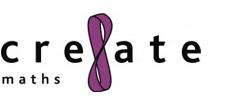Hospitality and Catering
A collection of resources designed to provide ideas and inspiration for teaching mathematics in the context of hospitality and catering. These resources have been selected as relevant to post-16 vocational learners who are working towards re-sitting GCSE Mathematics.
Food for thought - The Eat Well Plate looks at food groups and their contribution to a healthy diet. The mathematical topics covered include interpreting and constructing pie charts, using ratios and the connections between ratios, fractions and percentages. Going Bananas looks at preparing different smoothies and value for money. The mathematics covered includes proportional reasoning, weight and volume. Fish Dish This task requires students to plan when they should start preparing a meal in order to have it ready by a stated time. The mathematics covered includes interpreting and analysing data. Fruit Pies gives students the task of finding how many circular pie tops and bottoms they can cut from a rectangular sheet of pastry. The mathematics involved includes areas of circles and rectangles. Boxes and bottles considers some of the decisions that face packaging manufacturers. Topics covered include volume and nets of 3D shapes.
View the MEI Contextualisation Toolkit
- ALL
- Teacher guidance
- Activity sheet
- Other
Teacher guidance
Food for Thought – The Eat Well Plate
The everyday context of food serves as a vehicle for engaging learners in exploring the mathematical ideas of ratios, percentages, fractions, and pie charts which are useful in their vocational areas. Students are asked to agree the main food groups that might be suitable for a healthy diet and then represent the proportions of each food group mathematically and pictorially.
Activity sheet
Going Bananas
In this Cre8ate maths topic students work out what a portion size looks like, find out whether they are eating enough fruit and vegetables and compare the costs of making and buying smoothies.
In How much is in a portion, students estimate weights of fruit and vegetables then weigh each item and calculate their percentage error.
Five-a-day explores the eating habits of the class, their data is collated and used to compare data handling representations and to estimate means from grouped data.
The smoothie challenge investigates whether they are good value for money and requires students to do calculations involving money, weight and volume.
Fish Dish
This Bowland assessment task requires students to plan when they should start preparing a meal in order to have it ready by a stated time. Students are given a number of job cards. Each card explains what needs to be done, how long the job will take and a condition as to when the job should be completed. Students have to select a way of representing the sequence of jobs using a table or diagram showing times, constraints and which jobs can be done in parallel. Students are to be encouraged work logically towards a result and explore the effects of altering the order of tasks. Teacher guidance includes concepts which may be discussed with students, examples of probing questions which may be useful and assumptions that students need to make when completing the task. The assessment guidance consists of a progression table detailing how students may improve in each of the key processes. The resource concludes with a number of examples of students' work, together with comments, probing questions and feedback.
Fruit Pies
In this Bowland task, students are presented with the problem of finding how many circular pie tops and bottoms they can cut from a rectangular sheet of pastry. Students are given the diameter of the top and bottom of the pies, which are different, and the initial size of the sheet of pastry. There is an added twist to this problem as students can take the left over pastry and make a second sheet of pastry from which further tops and bottoms can be cut. Students are required to break down the problem into smaller steps, use logical reasoning, perform accurate calculations and communicate their findings effectively. Teacher guidance includes concepts which may be discussed with students, examples of probing questions which may be useful and assumptions that students need to make when completing the task. The assessment guidance consists of a progression table detailing how students may improve in each of the key processes. The resource concludes with a number of examples of students' work, together with comments, probing questions and feedback.
Boxes and Bottles
Boxes and bottles come in all shapes and sizes. These Cre8ate maths activities explore some of the mathematics behind packaging decisions taken by manufacturers, they provide a platform for students to make conjectures and find efficient ways of recording results to justify claims they have made.
In Boxing stock cubes students use 36 multilink cubes to explore the number of different cuboids that can be made with a constant volume.
Exploring nets is the focus of Folding cubes. Here students are challenged to find as many different arrangements of 6 squares as they can. When the pupils have found the 11 nets of a cube they then have to decide which would be the best to use to create boxes to hold eight 1cm cubes of sugar.
In the resource How much does it hold, students order and estimate the capacity of a range of containers, before trying to half fill each of them and check their accuracy with a measuring jug.
Other
Hospitality and catering (other sources of ideas)
A collection of resources which provide ideas and inspiration for teaching mathematics in the context of hospitality and catering. The resources included in this collection require some adaptation to make them appropriate for the particular audience.


